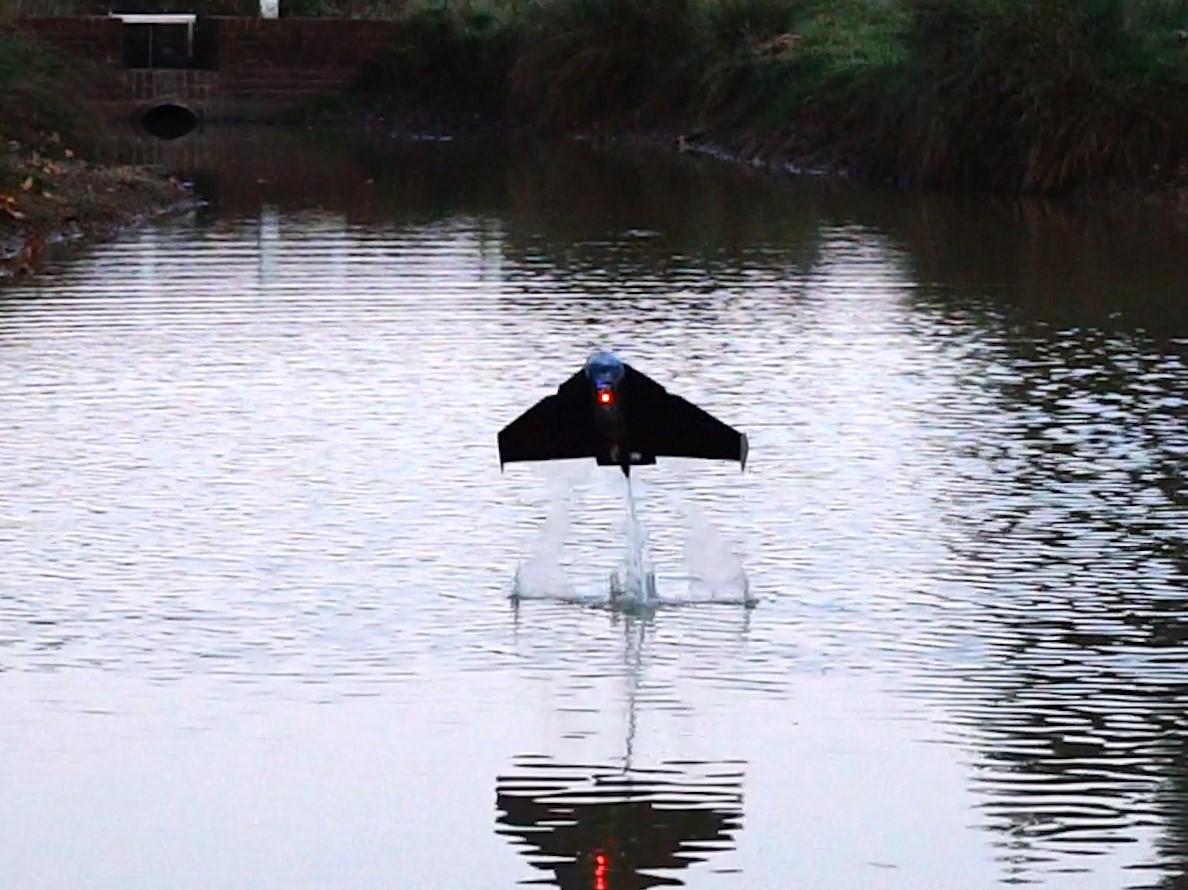'Flying fish' robot explodes from water and flies through the air
Innovative robot could collect water samples following floods or nuclear disasters, engineers say
A "flying fish" robot that can burst out of the water and into flight has been developed in the hope it can assist in the event of an environmental disaster.
The bio-inspired device which uses a simple combustion system that pushes water out as a jet and propels the robot up to 26 metres through the air, was developed by engineers at Imperial College London.
The propulsion technique is so effective that it is even able to fly out of choppy waters, meaning it could be used to collect water samples in difficult environments, such as floods or ocean oil spills.
"These kinds of low-power, tether-free robots could be really useful in environments that are normally time and resource-intensive to monitor, including after disasters such as floods or nuclear accidents," said Raphael Zufferey, an aeronautical engineer who worked on the device.
Details about it have been published in the academic journal Science Robotics.
Lead researcher Mirko Kovac explained the biggest challenge with developing such a robot was making such a small machine able to take off from the water.
"Water-to-air transition is a power-intensive process, which is difficult to achieve on a small-scale flying vehicle that needs to be lightweight for flight," he said. "We have used water-reactive chemicals to reduce the materials that the robot needs to carry. Since the chamber fills passively and the environmental water acts as a piston, we can create a full combustion cycle with only one moving part, which is the pump that mixes the water with the fuel."

The robot has been tested in a lab, in a lake, and in a wave tank in order to test its abilities in different conditions.
Successful trials of the launch and flight technology means it now moves on to the next phase of development, with the hope of eventually building a system that could be used in the real world to collect water samples from disaster zones.
The team at Imperial has teamed up with the Swiss Federal Laboratories for Materials Science and Technology in order to begin field trials in a range of environments.
Join our commenting forum
Join thought-provoking conversations, follow other Independent readers and see their replies
Comments